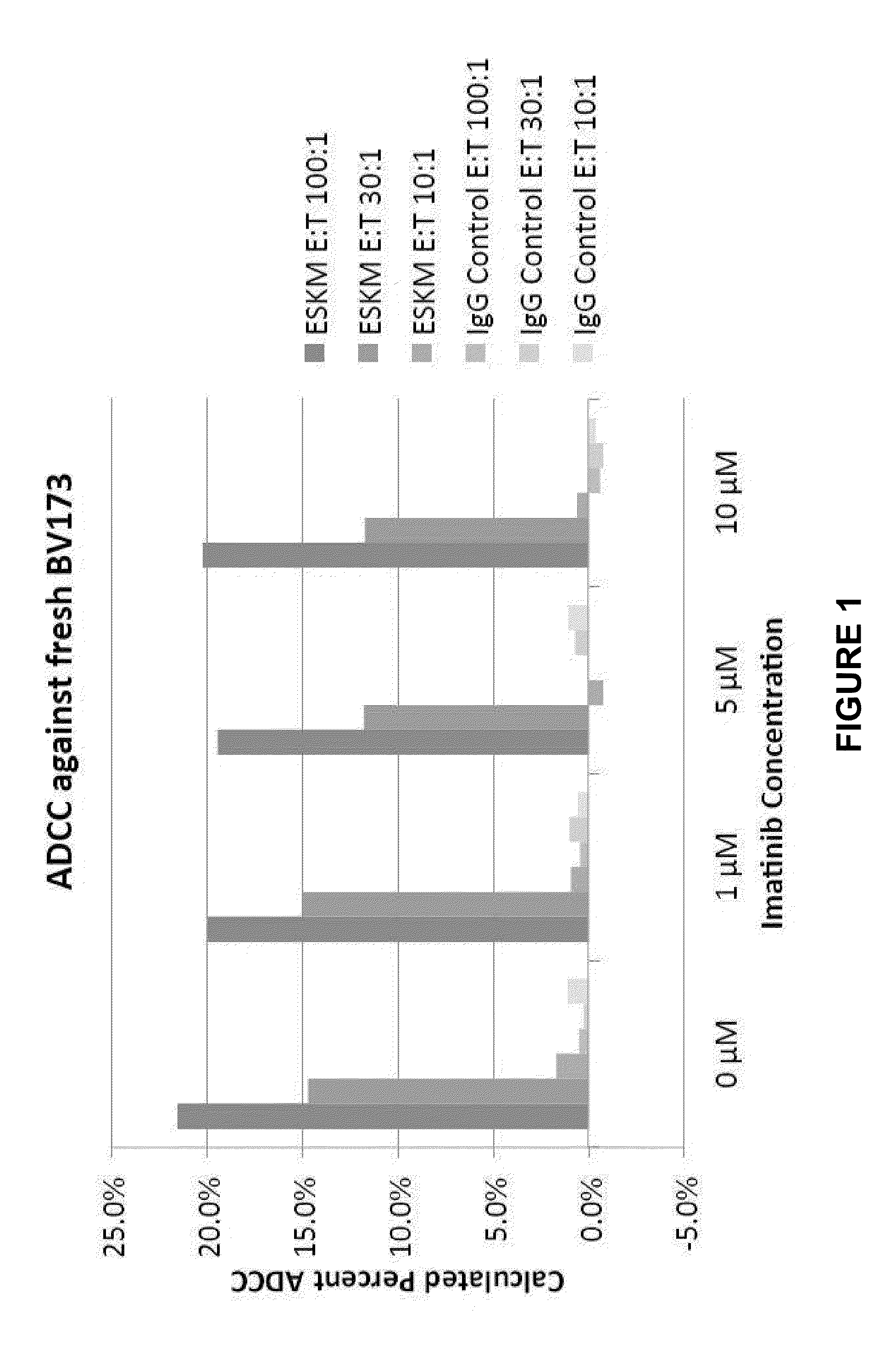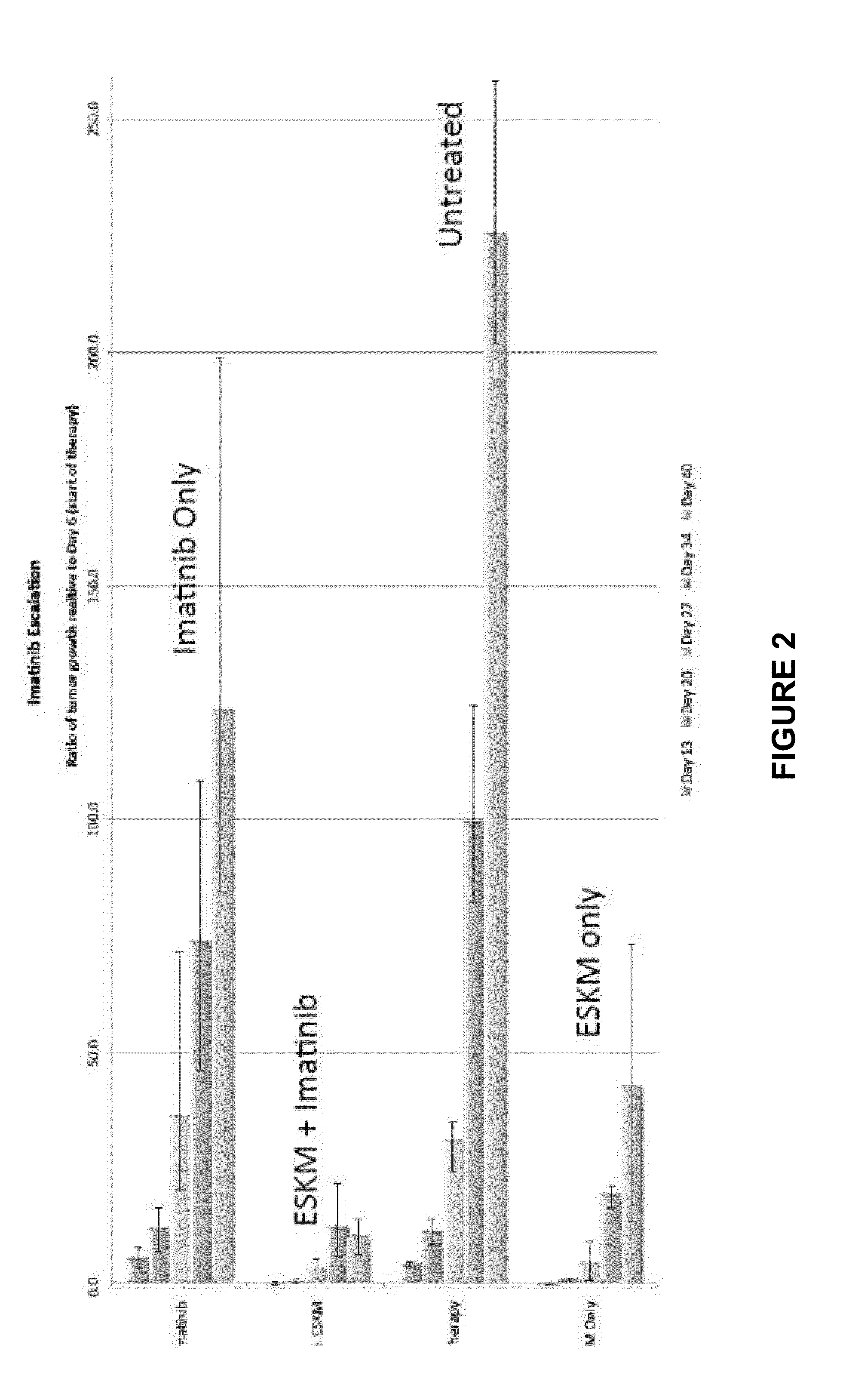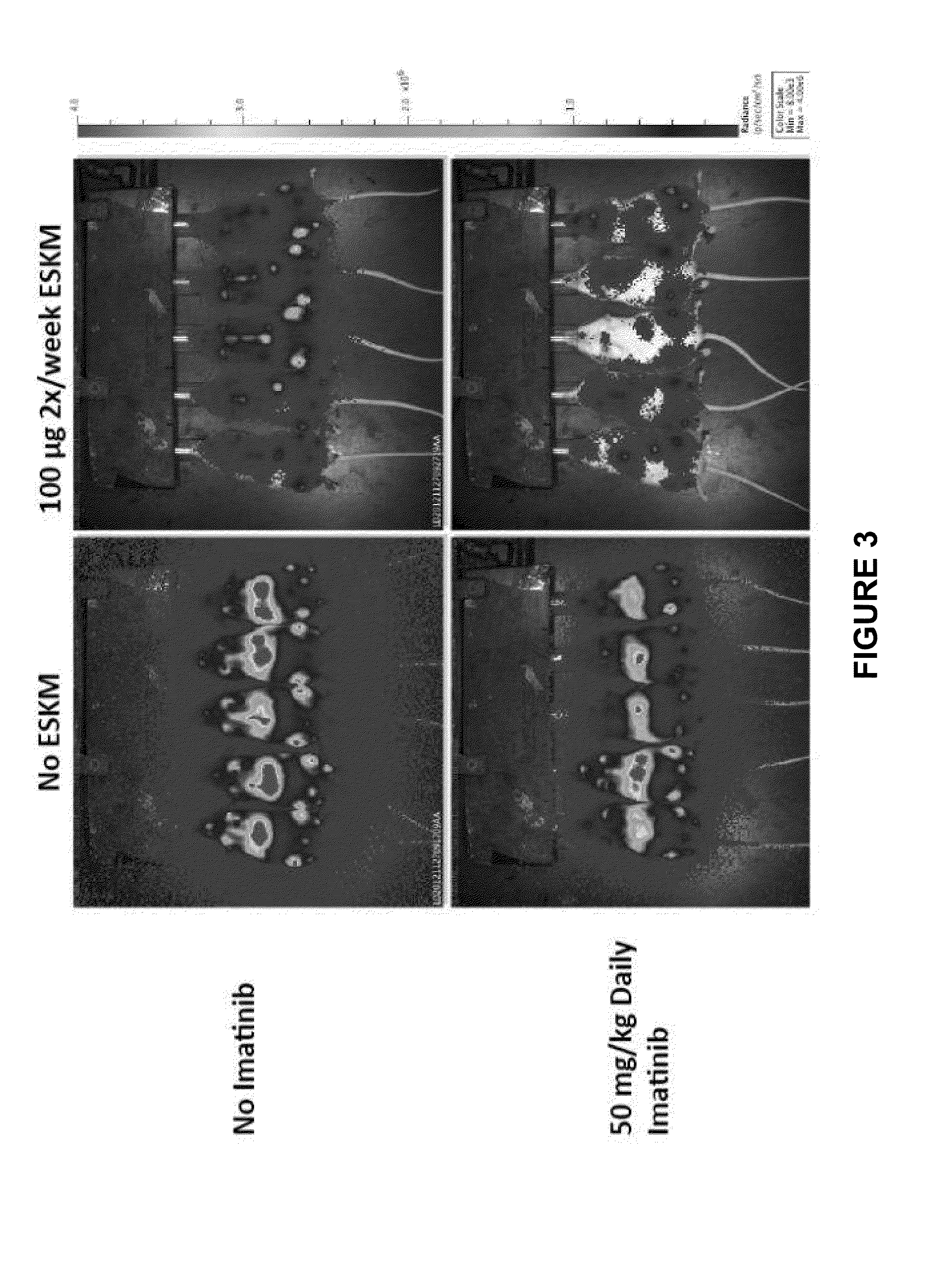Combination/adjuvant therapy for wt-1-positive disease
a technology for wt-1 and wt-1, which is applied in the field of treatment of wt1positive diseases, can solve the problems of inaccessible classical antibody therapy, limited clinical efficacy of some tkis, for example, imatinib and sunitinib, and achieve the effects of improving anti-tumor response, early inhibition of tumor growth, and maintaining the therapeutic efficacy of tki
- Summary
- Abstract
- Description
- Claims
- Application Information
AI Technical Summary
Benefits of technology
Problems solved by technology
Method used
Image
Examples
example 1
Materials and Methods
[0104]Cell Samples, Cell Lines and Antibodies.
[0105]After informed consent on Memorial Sloan-Kettering Cancer Center Institutional Review Board approved protocols, peripheral blood mononuclear cells (PBMC) from HLA-typed healthy donors and patients were obtained by Ficoll density centrifugation. All cells were HLA typed by the Department of Cellular Immunology at Memorial Sloan-Kettering Cancer Center. Leukemia cell line, BV173, (WT-1+, A0201+) was kindly provided by Dr. H. J. Stauss (University College London, London, United Kingdom). The cell lines were cultured in RPMI 1640 supplemented with 5% FCS, penicillin, streptomycin, 2 mmol / L glutamine, and 2-mercaptoethanol at 37° C. / 5% CO2.
[0106]Animals.
[0107]Six to eight week-old male NOD.Cg-Prkdc scid IL2rgtm1WjI / SzJ mice, known as NOD / SCID gamma (NSG), were purchased from the Jackson Laboratory (Bar Harbor, Me.) or obtained from MSKCC animal breeding facility.
[0108]Transduction and Selection of Luciferase / GFP Pos...
example 2
Antibody-Dependent Cellular Cytotoxicity (ADCC)
[0110]ADCC is considered to be one of the major effector mechanisms of therapeutic mAb in humans. Evaluation of efficacy, therefore, begins with in vitro experiments measuring ADCC against BV173 cell line, derived from CML in blastic crisis. Fresh BV173 cells were used for ADCC target cells. WT-1 antibody or its isotype control human IgG1 was incubated at 750 ng / ml with target cells and fresh PBMCs at different effector:target (E:T) ratio for 6 hrs. Imatinib was added at concentrations of 0, 1, 5, and 10 μM. The supernatants were harvested and the cytotoxicity was measured by standard chromium 51 release assay.
[0111]In the presence of human PBMC, WT-1 antibody mediated dose-dependent PBMC ADCC against naturally presented RMF epitope by HLA-A0201 molecule on tumor cells, the leukemia cell line BV173. Importantly, WT-1 antibody was able to mediate ADCC in the presence of various doses of imatinib. The killing was consistently observed at ...
example 3
[0112]In vivo efficacy of ESKM with TKIs was evaluated using NSG mice injected with HLA-A0201+ leukemic cell line BV173. The protocol used for imatinib and dasatinib therapy in combination with ESKM consisted of injecting 3×106 cells per mouse via tail vein, luciferin imaging 6 days after injection to assess tumor engraftment, and initiation of therapy immediately after imaging on day 6. Luciferin imaging was used weekly to monitor tumor growth. The TKI is injected intraperitoneally daily (50 mg / kg for imatinib and 20-40 mg / kg for dasatinib.) The antibody is injected intravenously twice per week.
PUM
| Property | Measurement | Unit |
|---|---|---|
| Cytotoxicity | aaaaa | aaaaa |
Abstract
Description
Claims
Application Information
 Login to View More
Login to View More - R&D
- Intellectual Property
- Life Sciences
- Materials
- Tech Scout
- Unparalleled Data Quality
- Higher Quality Content
- 60% Fewer Hallucinations
Browse by: Latest US Patents, China's latest patents, Technical Efficacy Thesaurus, Application Domain, Technology Topic, Popular Technical Reports.
© 2025 PatSnap. All rights reserved.Legal|Privacy policy|Modern Slavery Act Transparency Statement|Sitemap|About US| Contact US: help@patsnap.com



